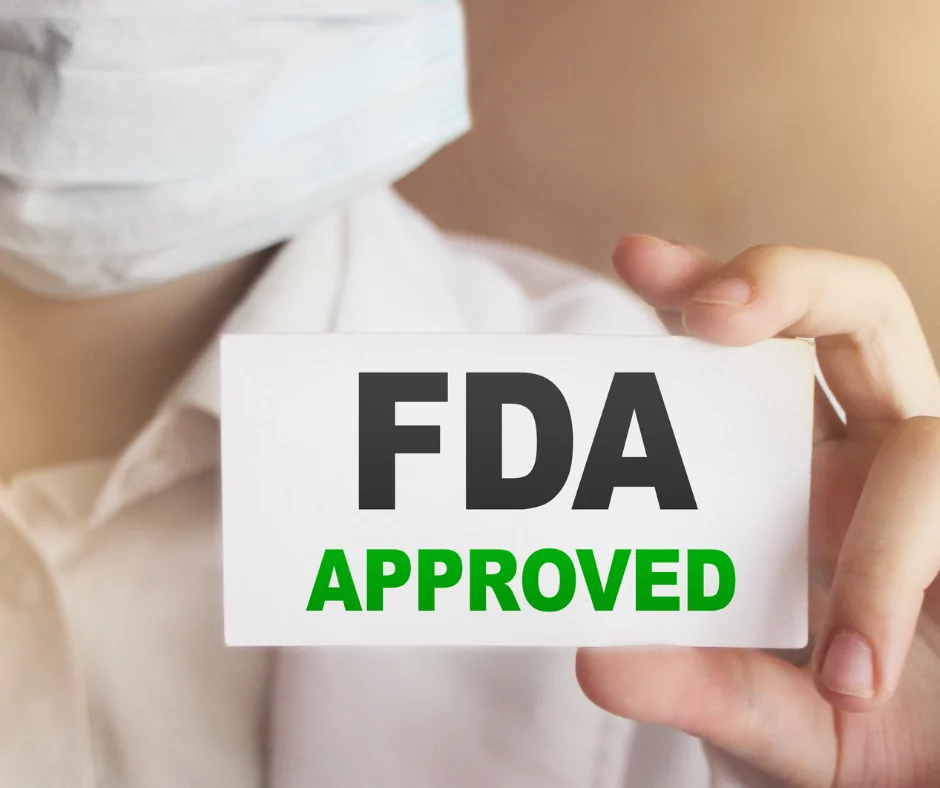The Use of Animal Drugs in Veterinary Medicine
When discussing unapproved animal drugs, it’s important to get a clear understanding of what we’re talking about. To start with, here are some definitions:
Drugs
According to the FDA, drugs are “articles intended for use in the diagnosis, cure, mitigation, treatment, or prevention of disease in man or other animals” and “articles (other than food) intended to affect the structure or any function of the body of man or other animals.”
Animal drugs
These are drugs that have been reviewed by the FDA as safe and effective in animals. The United States Food and Drug Administration (FDA) is a federal agency of the Department of Health and Human Services. It is responsible for approving all drugs for humans and animals in the US.

Animal drugs in veterinary medicine are used for countless scenarios, for example, treating a skin infection in a kitten, inducing ovulation in a cow, treating a tumor in a dog, and killing external parasites on a fish.
In each of these scenarios, the drug used must be approved by the Federal Food, Drug, and Cosmetic Act (FD&C Act).
The FDA Green Book List of Approved Animal Medicine
When an animal drug is approved, it is included in a publicly available list of approved animal drug products. This list is called the Green Book, and the FDA updates it every month. You can find the updates here.
To be added to the Green Book, animal drugs must be approved by the FDA. The process involves:
Getting an approved animal drug begins with making sure the drug fits the definitions of an “animal drug” explained above. Once a product is determined to be a drug for animal use, the next step is to determine if it is a “new animal drug.”
New animal drug: any drug intended for use in animals, other than man, the composition of which is not generally recognized, among experts qualified by scientific training and experience, as safe and effective for use under the conditions prescribed, recommended, or suggested in its labeling. For practical purposes, all animal drugs are new animal drugs.
Once it is established that the product fits the description of a new animal drug, it must then be found that it is safe and effective.
Safe: safe to the animal, food products derived from the animal are safe, safe to the person administering the drug or associated with the animal receiving the drug.
Effective: the product will consistently and uniformly do what the labeling claims.
Drug sponsors will submit a New Animal Drug Application (NADA) along with supporting data, including all adverse effects associated with using the drug.
The NADA must also include information on the drug:
- Chemistry
- Composition
- Component ingredients
- Manufacturing methods
- Facilities
- Controls
- Proposed labeling
- Analytical methods for residue detection and analysis if applicable
- An environmental assessment
- Residues in food products (if the drug is intended for use in a food-producing animals)
Safe
The sponsor is responsible for submitting all appropriate data on the new animal drug to establish effectiveness and safety. FDA review of the NADA submitted by drug sponsors is very complete and comprehensive. FDA scientists will determine if the data has been developed in accordance with either Good Laboratory Practice Regulations or clinical trial guidance.
If the studies were performed appropriately, then the data will be evaluated with reference to drug safety and effectiveness. The safety data must relate to dosage levels and routes of administration on the proposed labeling. The labeled use must be shown to be safe.
At the end of the animal safety review, a summary is produced, explaining why the product is safe or shown not to be safe. If the product is shown to be safe, but there are some restrictions or constraints required, all warning and precaution statements that must be placed on the label will be included in the summary, as well as any expected side effects.
Drugs that will be used in animals intended for consumption must also be shown to be safe for humans. The sponsor is responsible for providing the FDA with scientific information and experimental data that proves that the presence of residues of the animal drug in the edible food product (e.g., milk and meat) are safe for the consumer.
“Residues” apply to the parent drug and/or its metabolites. Detailed guidance can be found at the Centre of Veterinary Medicine (CVM). The FDA requires the drug’s sponsor to provide acceptable analytical methods to determine and confirm the animal drug or its metabolites in the animal tissue.
Effective
To show a drug is effective, all data submitted must relate either directly or indirectly to the specific label and claims made of the product. The sponsor of the drug must prove that the product produces the claimed effect.
Approval
Once a drug has gone through this process, it can either be approved, conditionally approved, indexed, or remain unapproved.
Approved
If the information in the application meets the requirements for the FDA, then it will be approved. This means the drug is safe and effective when it’s used according to the label. The approval also ensures the drug’s strength, quality, and purity are consistent from batch to batch, and the drug’s label is true, complete, and not misleading.

Conditional Approval
This is available for some drugs in minor species or major species in minor situations. A conditional approval means the drug has gone through the FDA’s drug approval process, except the drug has not yet met the effectiveness standard for full approval.
The drug will still be safe to receive conditional approval, and it is valid for one year. This can be renewed annually for up to four years for a total of five years. During this period, the drug company can continue to collect the effectiveness data to become approved. You can learn more here.
Index
Drugs which are indexed are unapproved but have legal marketing status. It can be sold legally for specific use in certain minor species. For example, drugs non-food-producing minor species such as pet birds, hamsters, and ornamental fish. Or the early non-food life stage of a food-producing minor species such as oyster spat (immature oysters which people do not eat).
You can read more about indexed drugs here. Test your knowledge of veterinary medicine by taking our quiz!
What are Unapproved Animal Drugs?
Unapproved animal drugs are drugs that don’t have legal marketing status. They can not be marketed. Unapproved animal drugs may not meet the FDA’s standards for safety and efficacy and may not be appropriately manufactured or properly labeled and packages. Unapproved animal drugs include animal drugs compounded from bulk drug substances.

An unapproved animal drug may be distributed in accordance with 21 CFR Part 511 if the drug will be used for research (i.e., data will be collected and submitted in support of a New Animal Drug Approval). Unapproved animal drugs can only be used by experts, qualified by scientific training and expertise, to investigate the safety and efficacy of animal drugs.
Where to find a List of Unapproved Animal Drugs
There is no list of unapproved animal drugs. However, there are things you can do to check to see if a drug is approved.
- Check the drug’s label. All FDA-approved animal drugs have a New Animal Drug Application (NADA) number or, for generic animal drugs, an abbreviated new animal drug (ANADA) number. It is a six-digit number usually followed by the statement “Approved by FDA.”
- Check the Green Book of approved animal drugs found here. If the drug is not listed, then concern should be raised that it could be unapproved.
Reporting Problems
Any adverse events associated with animal drugs should be reported. Adverse events could include:
- Side effects in animals such as vomiting or diarrhea.
- Side effects in people exposed to the drug such as rashes or headaches.
- Product defects such as broken seals or leaking bottles.
- Medication errors such as giving the wrong dose.
- Lack of effectiveness, such as the product not working.

Any drug that is approved by the FDA and has a six-digit NADA or ANADA number can be reported to the FDA. Any indexed or unapproved drug can also be reported.
FDA-approved or indexed drugs that have an adverse event should be reported to the drug company. The company responsible for the drug is then required to submit records or adverse drug events to the FDA.
Contact information is usually found on the drug label. The veterinarian who administered the medication might also be contacted to discuss the adverse event. The adverse event can also be directly reported to the FDA via form FDA 1932a.
For unapproved drugs with an adverse event, you can submit form FDA 1932a. You can access the form here. You should also report the problem to the manufacturer or distributor on the label and the store where you purchased the product.
What to include in your report:
- The health of the animal prior to the event and any pre-existing medical problems.
- Names and doses of the drug.
- Examination findings by a veterinarian.
- Test results, e.g., blood work.
- Current type and/or brand of food, feed, or treats.
Any information provided to the FDA is held in strict confidence and protected by law.
